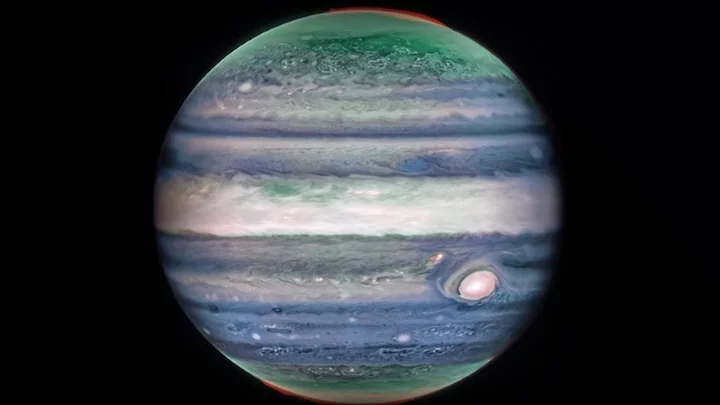
Surprise discovery shows major feature on Jupiter that experts had previously missed
Despite being by far the largest planet in the solar system, experts are still making surprise discoveries about Jupiter. The planet is only beaten in size by the Sun and as technology has evolved, scientists have sent multiple probes to investigate Jupiter. Despite all the scientific work that has gone into investigating the stripes and swirls that give Jupiters its well-known appearance, experts have only just discovered the existence of a high-speed jetstream above the clouds around the planet’s equator. The jetstream is a whopping 3,000 miles wide and was discovered thanks to the infrared data gathered by the James Webb Space Telescope (JWST) currently orbiting the Sun. Its discovery is giving experts an insight into how the planet’s atmosphere works, as well as its ill-understood weather phenomena. Ricardo Hueso from the University of the Basque Country in Spain is the lead author of the study, published in Nature Astronomy and explained: “This is something that totally surprised us.” He added: “What we have always seen as blurred hazes in Jupiter’s atmosphere now appear as crisp features that we can track along with the planet’s fast rotation.” Scientists have long been aware of light and dark clouds that are known as zones and belts that travel around the planet in different directions and at differing altitudes, but how this occurs has left them baffled. Analysis of the data collected by the JWST revealed the jetstream that was previously only just visible but very hazy. Data confirmed that it sits around 25 miles above the clouds and travels around Jupiter’s equator at around 515 kilometres per hour (320 mph). The researchers compared their data with that collected from the Hubble’s observations of the lower cloud levels and concluded that the jetstream may form part of a weather pattern. Planetary scientist Leigh Fletcher from the University of Leicester, explained: “Jupiter has a complicated but repeatable pattern of winds and temperatures in its equatorial stratosphere, high above the winds in the clouds and hazes measured at these wavelengths.” He added: “If the strength of this new jet is connected to this oscillating stratospheric pattern, we might expect the jet to vary considerably over the next two to four years – it'll be really exciting to test this theory in the years to come.” Sign up to our free Indy100 weekly newsletter How to join the indy100's free WhatsApp channel Have your say in our news democracy. Click the upvote icon at the top of the page to help raise this article through the indy100 rankings.
2023-10-24 19:16

Scientists warn bananas could go extinct as disease ravages fruit
Bad news for banana lovers – scientists have warned that the fruit could face extinction, after a fungal disease outbreak. Crops of the Cavendish banana have been hit by an infection called Panama disease, with those in Asia, Africa, the Middle East, Australia and central America particularly badly affected. The disease, which is also known as banana wilt, starts in the roots of the banana tree and then spreads through its vascular system. Ultimately, it stops the plant from absorbing water or carrying out photosynthesis, eventually killing the tree. For Cavendish banana growers, it could spell disaster. While there are more than 1,000 varieties of bananas, about 47 per cent that humans eat are Cavendish. Cavendish has historically dominated the global banana market since the 1950s, partly because of its resistance to the main banana-killing diseases. It also has a long shelf life, making it more attractive for international import and export, and the plant also produces more bananas than other varieties on the same amount of land. Part of the reason scientists think it could be endangered is because of what happened to another popular banana variety called the Gros Michel. Gros Michel was the main export banana in the early 20th century, but was practically wiped out by a predecessor disease to the one hitting Cavendishes now. The first infections of Gros Michel farms began in the late 19th century and took several decades to affect production to the point where growers were looking for a new variety to sell. Cavendish, meanwhile, was first hit by the current strain of Panama disease in 1997, and it has now spread across several continents. However, scientists are working on a genetically modified version of the banana to fight to infection. James Dale, a professor and leader of the banana biotechnology program at Queensland University of Technology, is working on the project. He told Insider: “The disease moves slowly, so we have at least a decade before the impact is drastic.” “I would say with certainty that there will be a solution before the export market for Cavendish is severely affected.” Let’s hope he’s right. How to join the indy100's free WhatsApp channel Sign up to our free Indy100 weekly newsletter Have your say in our news democracy. Click the upvote icon at the top of the page to help raise this article through the indy100 rankings.
2023-10-24 18:21
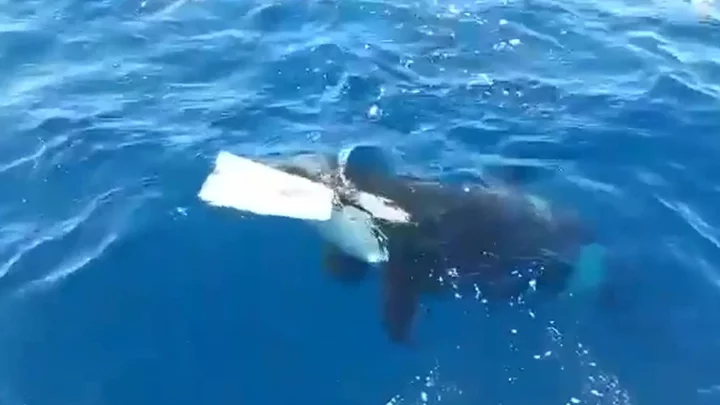
Scientists think orcas might be getting smarter as they show frightening new behaviours
As if orcas weren’t frightening enough, experts think they are getting even smarter as they have started to learn some terrifying new behaviours. The whale species, commonly known as killer whales, is an apex predator that has learned to adapt its hunting methods to a variety of different prey. In March 2019, researchers were stunned when they witnessed the first documented case of a pod of orcas working as a team to kill one of the largest animals on the planet, a blue whale. The gruesome incident took place on the coast of southwestern Australia as experts watched as a dozen orcas bit chunks out of the adult blue whale, slowly wearing it down until it finally died an hour later. While it may have been the first recorded case, it has not been the last. Additionally, a small population of orcas on the coast of Spain and Portugal have become fans of ramming and damaging boats, sometimes causing enough destruction to sink them. Elsewhere, orcas have been seen abducting baby pilot whales and tearing the livers out of sharks that later wash up on shore. Deborah Giles, an orca researcher at the University of Washington and the nonprofit Wild Orca explained to Live Science: “These are animals with an incredibly complex and highly evolved brain. They've got parts of their brain that are associated with memory and emotion that are significantly more developed than even in the human brain.” But, while the actual anatomy of the animals’ brains hasn’t changed, their ability to learn is what is making orcas smarter than ever before. They implement what is known as social learning, where younger members of the pods observe and learn hunting methods from the adults, particularly the dominant matriarch, who themselves, are always learning. Josh McInnes, a marine ecologist at the University of British Columbia, explained: “This behaviour may be being shared between individuals, and that's maybe why we're seeing an increase in some of these mortality events.” But, while experts think they are getting smarter, they also think it may be leading to the breakup of large pods of orcas. Michael Weiss, a behavioural ecologist and research director at the Center for Whale Research in Washington state, said: “Their social bonds get weaker because you can't be in a big partying killer whale group if you're all hungry and trying to search for food.” Sign up to our free Indy100 weekly newsletter How to join the indy100's free WhatsApp channel Have your say in our news democracy. Click the upvote icon at the top of the page to help raise this article through the indy100 rankings.
2023-10-24 17:54
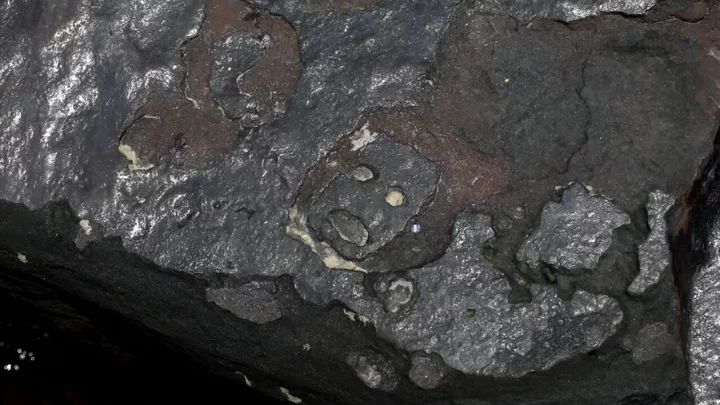
Mysterious ancient engravings uncovered by drought in the Amazon
The discovery of beautiful, ancient rock engravings has been a bitter-sweet experience for experts in Brazil’s Amazon. On the one hand, the carvings offer an exciting insight into the first people who inhabited the region. On the other, it is a worrying signal that the Negro River, which runs through the region, may soon cease to exist. An extreme drought in parts of the rainforest has led to a dramatic drop in river water levels – with the Negro’s flow reaching its lowest level for 121 years last week. The drop exposed dozens of normally submerged rock formations featuring carvings of human forms that may date back some 2,000 years. Livia Ribeiro, a longtime resident of the Amazon's largest city, Manaus, said she heard about the rock engravings from friends and wanted to check them out. "I thought it was a lie,” she told the AFP news agency. “I had never seen this and I've lived in Manaus for 27 years.” She admitted that whilst scientists and members of the public were delighted at the discovery, they acknowledged that it also raised unsettling questions. "We come, we look at (the engravings) and we think they are beautiful. But at the same time, it is worrying,” she said. “I also think about whether this river will exist in 50 or 100 years.” Drought in Brazil's Amazon has drastically reduced river levels in recent weeks, affecting a region that depends on a labrynth of waterways for transportation and supplies. The Brazilian government has sent emergency aid to the area, where normally bustling riverbanks are dry and littered with stranded boats. According to experts, the dry season has worsened this year due to El Niño, an irregular climate pattern over the Pacific Ocean that disrupts normal weather, adding to the effect of climate change. Jaime Oliveira, of the Brazilian Institute of Historical Heritage (Iphan), said the engravings comprise an archaeological site of "great relevance”. They are located at a site known as Praia das Lajes and were first seen in 2010, during another period of drought (which was not as severe as the current one). Most of the engravings are of human faces, some of them rectangular and others oval, with smiles or grim expressions. "The site expresses emotions, feelings, it is an engraved rock record, but it has something in common with current works of art," Oliveira said. For Beatriz Carneiro, historian and member of Iphan, Praia das Lajes has an "inestimable" value in understanding the first people who inhabited the region, a field still little explored. "Unhappily it is now reappearing with the worsening of the drought," she said. "Having our rivers back (flooded) and keeping the engravings submerged will help preserve them, even more than our work." Sign up for our free Indy100 weekly newsletter Have your say in our news democracy. Click the upvote icon at the top of the page to help raise this article through the indy100 rankings
2023-10-23 22:23
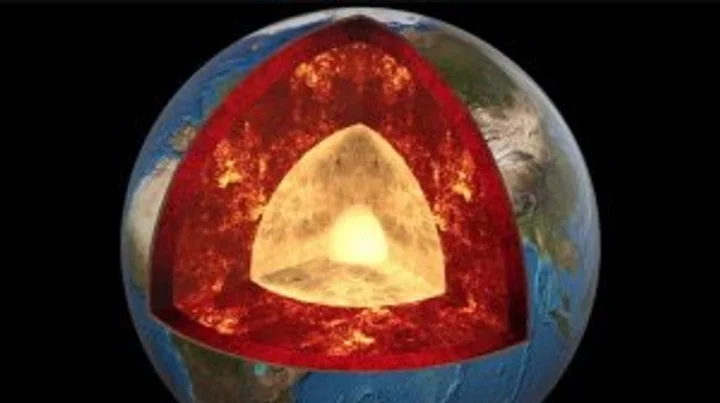
Scientists baffled after discovering that the Earth's core is 'leaking'
The name “core” suggests something hard and fixed but, it turns out, the Earth’s core is leaking. That is, at least, according to a team of top scientists, who drew the conclusion after analysing 62-million-old Arctic rocks. Geochemists from the California Institute of Technology and Woods Hole Oceanographic Institution detected record concentrations of helium 3 (3He) and helium 4 (4He) isotopes in the rocks, which suggest a slow trickle up from the very heart of our planet. They believe there could be reserves of the elusive gas buried some 2,900km underground. Helium is a surprisingly rare element on the Earth’s surface and experts have yet to establish just how much of it remains trapped deep beneath our feet. However, the new discovery has provided them with a fresh insight into the most mysterious region of our world. Understanding the presence of these helium isotopes could illuminate key processes in the core, such as how the Earth generated its life-protecting magnetic field. Most helium in the universe dates back to the Big Bang which occurred 13.8 billion years ago. The Earth swallowed up some of this as an infant planet, but mostly burped it all away during its 4.6 billion-year-long formation, as Science Alert reports. This means that any traces of helium found in volcanic rock – such as the samples unearthed in the Arctic – are believed to come either from pockets of mantle that are yet to release their helium, or from a vast, slow-leaking reserve. Basaltic lavas on Canada's Baffin Island contain some of the world's highest ratios of 3He to 4He, which geologists believe indicates that the gas's presence is not to do with the atmosphere, but rather the sign of deeper terrestrial origins. Several years ago, geochemist Forrest Horton uncovered helium isotope ratios of up to 50 times that of atmospheric levels in samples collected from Baffin's lava fields. This unusual concentration was also detected in lavas collected from Iceland. Horton and his team wondered if the helium in both samples may have derived from an ancient reservoir deep within the crust. And, it seems, their hunch may have been right. Their latest analysis – including specimens of the mineral olivine taken from dozens of sites across Baffin and surrounding islands – has delivered the highest ratio of 3He to 4He ever recorded in volcanic rock – measuring nearly 70 times anything previously detected in the atmosphere, as Science Alert notes. The team also considered ratios of other isotopes in order to rule out factors that may have altered the helium’s composition post-volcanic eruption, and found that the ratio of isotopes in the gas neon also matched the conditions present during the Earth’s formation. Despite advances in geology, the Earth’s core remains a great mystery, given that we have no way of directly exploring its core. The deepest hole humans have ever dug – branded the "entrance to hell" – extended an impressive 12,263m (40,230ft) down, but even that doesn’t come close to breaking through the crust to the layers beneath. Still, thanks to techniques like seismic tomography – which analyses how waves of energy travel through different materials during earthquakes – we’ve been able to map out the world’s interior. And carefully crafted simulations, based on the thermodynamics and pressures of our planet’s innards, suggest reserves of noble gases (like helium and neon) trapped in the core could have been protected as the Earth grew before seeping into the surrounding mantle over time. If the core is leaking, this could teach us a thing or two about how planets like ours form and how life, eventually, emerges. Sign up for our free Indy100 weekly newsletter Have your say in our news democracy. Click the upvote icon at the top of the page to help raise this article through the indy100 rankings
2023-10-23 17:21

Astronomers have just discovered an 8 billion-year-old radio signal
An eight billion-year-old radio signal containing extreme levels of energy has been discovered by astronomers. According to the journal Science, a “fast radio burst” was recorded as lasting for just a millisecond. The radio-frequency electromagnetic radiation was identified as FRB 20220610A, and it contained a truly staggering level of energy – releasing the same amount that the sun releases in 30 years. As CNN reports, the true nature of these blasts can often be hard to determine, given that they last for such a short length of time. It is believed, however, that they result from galaxies merging to create new stars. Furthermore, they could also be 'weighed', in order to measure the mass of the elements in the universe which are found between galaxies and unaccounted for. Coauthor Ryan Shannon said: “If we count up the amount of normal matter in the universe - the atoms that we are all made of - we find that more than half of what should be there today is missing. “We think that the missing matter is hiding in the space between galaxies, but it may just be so hot and diffuse that it’s impossible to see using normal techniques.” The huge signal was discovered using the Australian SKA Pathfinder radio telescope, before further observation was undertaken using a telescope in China – which was able to determine that the fast radio burst was the oldest and more remote example discovered to date. It comes after scientists were left baffled following the discovery of a mysterious object which sends radio waves every 21 minutes earlier this year. The really strange thing is, it’s been doing the same thing for 45 years and astronomers are still unsure about what it could be. Sign up for our free Indy100 weekly newsletter Have your say in our news democracy. Click the upvote icon at the top of the page to help raise this article through the indy100 rankings
2023-10-22 23:21

Former Twitter employee says working for Elon Musk was ‘hardest experience of her life’
A former employee of Twitter/X has spoken about the working conditions under Elon Musk, claiming that it was the ‘hardest experience of her life’. The social media platform’s head of trust and safety, Ella Irwin, resigned from the company in June, confirming the decision to Reuters. Her decision to leave the company came after Musk doubled down on his stance on trans issues, confirming he would be lobbying legislators to “criminalise making severe, irreversible changes to children below the age of consent” through gender-affirming surgery, and that “nobody knows who they are as a child”. Writing in June, Irwin said that it had become clear “there was no longer alignment” between her “nonnegotiable principles” and the policies of Twitter/X. Now, Irwin has spoken further about her decision and criticised the “terrible” decisions made by Musk. Irwin released a statement to NBC News, saying: “It absolutely was the hardest experience that I've gone through in my career. Speaking about Musk’s decision making, Irwin said: “There's more emotion behind his decisions than I would have maybe expected before I met him. “I think that contributes to some of the impulsiveness… I think there were a lot of situations in which I would have handled things very differently.” Reflecting on Musk’s leadership, Irwin added: “There were things that I wouldn't have tweeted in the middle of the night, [and] there were certainly things that could have been stated better.” It comes after Kanye West accused Musk of taking advantage of his clout in a bid to boost the “struggling” platform’s numbers. West is used to causing outrage on Twitter/X, having been banned from the platform in the past. Sign up for our free Indy100 weekly newsletter Have your say in our news democracy. Click the upvote icon at the top of the page to help raise this article through the indy100 rankings
2023-10-22 16:49
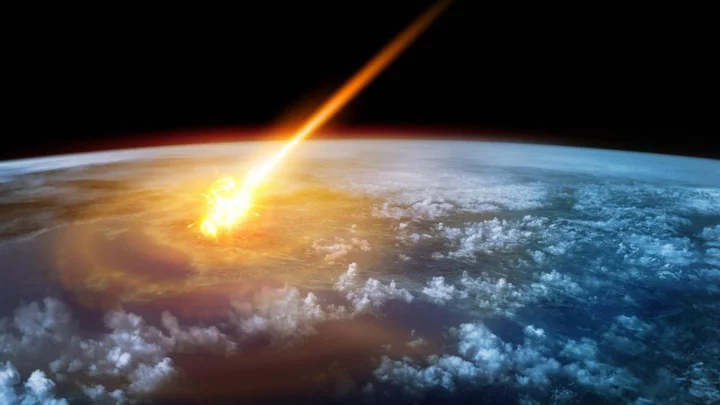
Meteor crashes through man's roof and he sells it for millions
A man had a meteor crash through his roof. Now he's a millionaire. Josua Hutagalung was stunned when a space rock crashed into his home in Kolang, Indonesia. Hutagalung was working outside when the meteor smashed through his veranda next to the living room. It managed to bury itself 15cm deep in the soil. The meteor turned out to be 4.5 billion years old, weighing 2.1kg, boasting a price tag of £1.4 million. It was classified as an extremely rare CM1/2 carbonaceous Chondrite. The meteor was bought by a specialist collected for the equivalent to 30 years' salary. Talking of his newfound wealth, Hutagalung said he wanted to use it to build a church in his community. "I have also always wanted a daughter," he told The Sun, saying he saw the meteor as a "sign that I will be lucky enough now to have one". Three other fragments of the meteor were also found nearby. After it was bought from a collector in Indianapolis, the meteorite was shipped to the US. Jared Collins, a meteorite expert from America, who bought part of the rock, said: "My phone lit up with crazy offers for me to jump on a plane and buy the meteorite. "It was the middle of the Covid crisis and frankly it was a toss-up between buying the rock for myself or working with scientists and collectors in the US. "I carried as much money as I could muster and went to find Josua, who turned out to be a canny negotiator." Sign up to our free Indy100 weekly newsletter Have your say in our news democracy. Click the upvote icon at the top of the page to help raise this article through the indy100 rankings.
2023-10-22 00:23

Huge shipwreck discovered after 128 years by crew making a nature documentary
A massive shipwreck which hasn’t been seen since it sank 128 years ago has been discovered by a crew making a nature documentary. Filmmakers were working on a project about a mussel species which lives in the Great Lakes in the US when they made the unexpected find. Yvonne Drebert and Zach Melnick were researching the invasive quagga mussel when they stumbled upon the steamship Africa, Fox Weather reports. The ship was sunk in 1895 after travelling from Ohio to Ontario on Lake Huron in dangerous conditions. The wreck was found after the filmmakers’ underwater drone detected something big and a camera was sent down to take a look. “It got more and more definition as we got closer and closer, and all of a sudden, we could see, ‘Wow, this is a steamship, a wooden steamship!'” Melnik said. “So this is old, and it is incredibly well intact.” The discovery was made possible due to the mussel species, which had covered the wreckage. The ship was identified as the Africa. Since the discovery, families of the people who were lost on board have been in touch with the filmmakers. “One of the incredible things that’s happened since this story has come to light just a couple of weeks ago is that several of the descendants of family members who died on this wreck so many years ago have reached out to us,” Melnick said. “We’re working with those families to try to find a way to remember those sailors who had died 128 years ago.” The mussel species will eventually destroy the wreckage, and the quagga can be hugely damaging to natural environments. The Center of Invasive Species Research in Riverside, California, reports that quagga [and zebra mussels] invasions “have had catastrophic impacts in the ecosystems in which they have established.” “These organisms clog water intake structures (e.g., pipes and screens), which greatly increases maintenance costs for water treatment and power plants,” the organization adds on its website. “Recreational activities on lakes and rivers are adversely affected as mussels accumulate on docks, buoys, boat hulls, anchors and beaches can become heavily encrusted.” “Interestingly, invasions by quagga and zebra mussels have been documented as having some positive affects on receiving ecosystems. For example, filtration of water by mussels as they extract food removes particulate matter. This filtration has improved water clarity, and reduced the eutrophication of polluted lakes.” Sign up for our free Indy100 weekly newsletter Have your say in our news democracy. Click the upvote icon at the top of the page to help raise this article through the indy100 rankings
2023-10-21 17:51

Giant heat-emitting mass discovered under the surface of the Moon
A huge mass of heat-emitting rock has been found buried beneath the surface of the Moon. The incredible discovery was made beneath one of the Moon’s craters, where a large mass of granite has slowly been releasing heat for years. Experts know that the Moon used to have eruptions and lava fields flowing from it, but until now, they have never uncovered evidence that is reminiscent of Earth-like volcanoes, underneath which granite forms when magma cools and crystalises deep beneath the surface. Now, that has changed after astronomers looked a bit more deeply at what lies beneath the Compton and Belkovich craters, located on the far side of the Moon. There they came across a large piece of granite rock that is emitting heat. The discovery excited experts as granite is not commonly found outside of Earth. Granite on the Moon was discovered using data from both Chinese and American lunar orbiters, and the information has revealed a whole new volcanic process never before witnessed. In a statement, one of the lead researchers, Dr Matt Siegler, from the Planetary Science Institute, said: “Using an instrument looking at microwave wavelengths – longer than infrared – sent to the Moon on both the Chinese Chang’E 1 and 2 orbiters, we have been able to map temperatures below the surface. “What we found was that one of these suspected volcanoes, known as Compton-Belkovich, was absolutely glowing at microwave wavelengths.” He continued: “What this means is that it is hot, not necessarily at the surface, as you would see in infrared, but under the surface. “The only way to explain this is from extra heat coming from somewhere below the feature within the deeper lunar crust. So Compton-Belkovich, thought to be a volcano, is also hiding a large heat source below it.” Using the data, they believe the 12-mile wide dip makes up the caldera, or depression, of the ancient volcano, where the surface temperature is 10°C higher than the surrounding areas. The volcano is thought to have last erupted 3.5 billion years ago and experts believe the heat that is emitting from the granite below is due to trapped radioactive material in the rock. Sign up to our free Indy100 weekly newsletter Have your say in our news democracy. Click the upvote icon at the top of the page to help raise this article through the indy100 rankings.
2023-10-19 19:54

Pets pose a serious health threat that we've all been overlooking
While millions of people own cats and dogs and wouldn’t dream of getting rid of them, pets pose a health risk to humans that is massively overlooked, according to a new study. Since the Covid-19 pandemic swept the world with devastating impact, it has become evident how much of a risk new viruses can pose to our well-being. However, experts are warning that it is not just the wildlife trade or exotic animals that we should be concerned about, as pets could also be sources of zoonotic diseases (which jump from animals to humans). Back garden pets, house pets, working animals and even rodents and pests could host new viruses that could affect humans, according to a new study. It warns that the urbanisation of our habitats and climate change will have an impact on diseases and their dynamics. The study was shared in Science Translational Medicine and penned by disease ecologist Amandine Gamble along with a group of colleagues, who gave examples of how companion animals (aka pets) and stray animals carried a risk of zoonotic spillover. While the risk is thought to be small, experts warn it is significantly underappreciated, especially given the frequent proximity human beings have to pets and strays. The study said: “These animals can play critical roles in zoonotic spillover by enabling the maintenance of a zoonotic pathogen, facilitating its spatial spread, acting as a bridge between otherwise unconnected species, or providing particular opportunities for its evolution.” While the zoonotic spillover that caused Covid-19 sparked a global pandemic, any instance of infection that jumps from animal to human is known as a zoonotic, regardless of the numbers affected. Pet parrots are a known transmitter of the Chlamydia psittaci bacterium to humans. Elsewhere, bats and horses are also known sources of zoonotic diseases. In terms of common household pets, cats can act as a link to a number of fatal diseases. The experts explained: “Numbers of infections are low, but plague is endemic in 17 western U.S. states, and many of the small mammals on which cats prey carry Y. pestis. “Consequently, outdoor cats and cats with incomplete veterinary care, combined with human interaction, suggest that cat-transmitted plague can be considered an increasing public health risk.” They conclude that “it is critical to implement surveillance programs allowing us to track changes in pathogen dynamics”. Sign up to our free Indy100 weekly newsletter Have your say in our news democracy. Click the upvote icon at the top of the page to help raise this article through the indy100 rankings.
2023-10-19 17:21
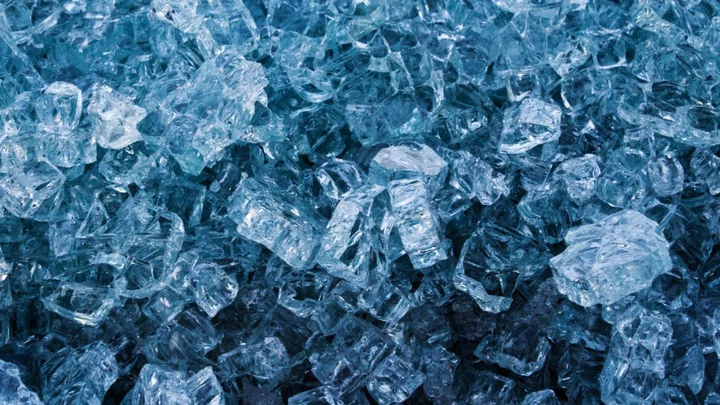
Science recreate mysterious ice found on Neptune that only melts at extreme temperatures
Five years ago, scientists managed to recreate what is known as superionic ice, in lab experiments for the first time. Superionic ice is believed to form within Uranus and Neptune as familiar materials are subjected to extreme pressures and heat, with iron atoms forming hot, black, heavy ice. But just last year researchers at several universities in the United States discovered a new phase of superionic ice. The discovery helps broaden our understanding of why Uranus and Neptune have off-kilter magnetic fields with multiple poles. Different to forms of water on Earth, the oxygen atoms in superionic ice are locked in a solid cubic lattice, while the ionised hydrogen atoms are loose, flowing through the lattice. This gives superionic ice conductive properties as well as raising its melting point, meaning the frozen water remains solid at temperatures up to 4704 Degree Celsius (8500 Fahrenheit). In this latest study, Stanford University's Arianna Gleason and colleagues blasted thin slivers of water, sandwiched between two diamond layers, with some extremely powerful lasers. "Recent discoveries of water-rich Neptune-like exoplanets require a more detailed understanding of the phase diagram of [water] at pressure–temperature conditions relevant to their planetary interiors," Gleason and colleagues explain in their paper, from January 2022 X-Ray diffraction revealed the hot, dense ice's crystal structure, and confirmed the ice crystals were in fact a new phase, distinct from the superionic ice that was observed in 2019. This newly discovered superionic ice, Ice XIX, has increased conductivity compared to its 2019 predecessor. The conductivity is important because it helps us understand why certain off-kilter magnetic fields are generated on planets such as Neptune and Uranus. You can read the paper, published in Scientific Reports here. Sign up to our free Indy100 weekly newsletter Have your say in our news democracy. Click the upvote icon at the top of the page to help raise this article through the indy100 rankings.
2023-10-19 16:53
